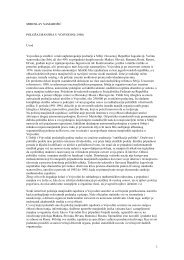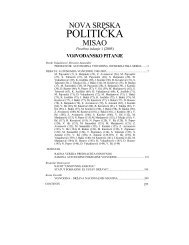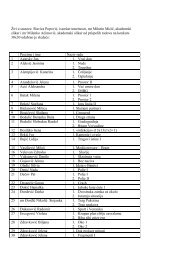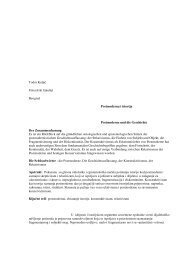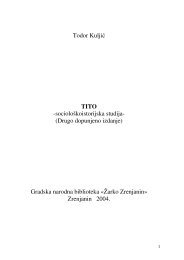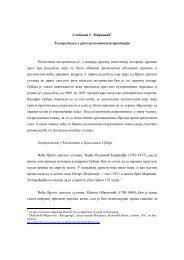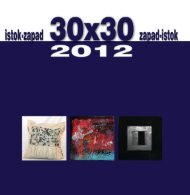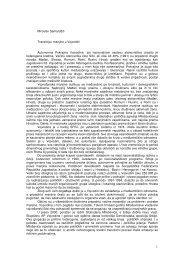Create successful ePaper yourself
Turn your PDF publications into a flip-book with our unique Google optimized e-Paper software.
193<br />
Film violence is a complex matter which can be<br />
addressed from diverse angles. There are studies that focus on<br />
the filmmaking art itself and analyse ways of capturing violence<br />
on screen, explain its aesthetisation and present the chronicles of<br />
most significant violence films. Conversely, the social/historical<br />
studies which place film violence in the context of social<br />
events and neglect its cinematographic value are notably more<br />
frequent. None of the studies that were consulted in the writing<br />
of this paper strived towards combining these two approaches<br />
in a comprehensive understanding of the construction of film<br />
violence and its influence on its audience. This paper presents<br />
an attempt to overcome this problem and explain film violence<br />
considering its key defining factors. The emphasis will be placed<br />
on three key factors that define and shape film violence: the social<br />
context, the development of the grammar of film language and<br />
the censorship. Furthermore, the paper looks at the importance<br />
of the three factors in certain chapters of the history of film. The<br />
paper, however, does not purport to give a detailed account of<br />
the film violence chronology, nor does it list all the noteworthy<br />
films for a research like this. The primary aim was to provide<br />
explanation of the cinematographic representation of violence<br />
using a limited number of most significant violence films as<br />
examples and also contemplate its social impact. Based on the<br />
three criteria which define film violence, the paper divides its<br />
cinematographic representation into two key periods. According<br />
to the shooting approach, the level of censorship imposed on<br />
the director and the social circumstances, one can recognize<br />
two chapters in film history regarding on-screen violence: the<br />
classical approach – marked by the nonexplicit aesthetics of<br />
violence – and the post-classical approach – where the explicit<br />
aesthetics of violence prevails.<br />
Moreover, apart from the attempt to explain film violence,<br />
this paper deals with the social impact of its representation. The<br />
results of empirical researches and the most striking examples<br />
of violent actions of film characters are not merely listed and<br />
outlined. They are incorporated into the framework of the moral



